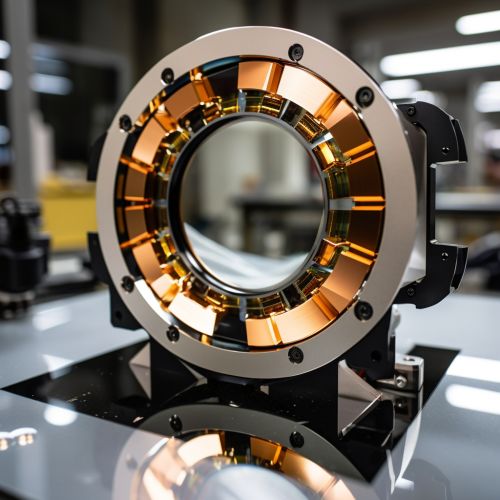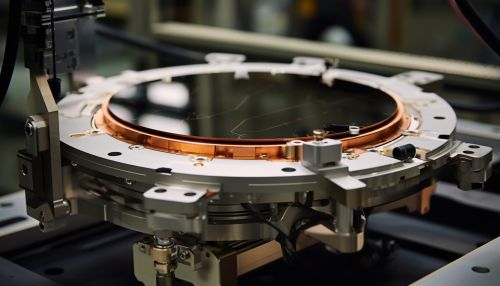Deformable mirror
Introduction
A Deformable mirror is a type of mirror whose surface can be dynamically altered to correct for optical aberrations or to form desired wavefront shapes. These mirrors are typically used in systems where the incoming light is not perfect, such as in astronomical telescopes or laser systems, where they can correct for the effects of atmospheric turbulence or other distortions.
Design and Operation
The design of a deformable mirror involves a reflective surface layer, usually made of a material such as aluminum or silver, which is attached to a series of actuators. These actuators can be controlled to deform the mirror surface in a precise manner. The number and arrangement of the actuators determine the number of degrees of freedom the mirror has, and thus the complexity of the shapes it can produce.
The operation of a deformable mirror is based on the principle of wavefront manipulation. By changing the shape of the mirror, the reflected light's wavefront can be altered. This can be used to correct for aberrations in the incoming light, or to produce a desired wavefront shape for outgoing light.


Types of Deformable Mirrors
There are several types of deformable mirrors, each with their own advantages and disadvantages. These include segmented mirrors, continuous face sheet mirrors, and membrane mirrors.
Segmented Mirrors
Segmented mirrors are made up of multiple small mirror segments, each of which can be individually controlled. This allows for a high degree of control over the mirror shape, but can also result in gaps between the segments, which can cause diffraction effects.
Continuous Face Sheet Mirrors
Continuous face sheet mirrors have a single, continuous reflective surface, which is deformed by the underlying actuators. These mirrors avoid the diffraction issues of segmented mirrors, but may not have as high a degree of control.
Membrane Mirrors
Membrane mirrors are a type of continuous face sheet mirror where the reflective surface is a thin, flexible membrane. These mirrors can achieve large deformations, but may not be as stable or precise as other types.
Applications
Deformable mirrors have a wide range of applications in various fields. Some of the most common uses include adaptive optics systems, laser systems, and microscopy.
Adaptive Optics
In adaptive optics systems, deformable mirrors are used to correct for the effects of atmospheric turbulence in astronomical observations. By dynamically adjusting the mirror shape to compensate for the distortions caused by the atmosphere, these systems can produce images with much higher resolution than would otherwise be possible.
Laser Systems
In laser systems, deformable mirrors can be used to shape the laser beam or to correct for aberrations in the optical system. This can improve the quality of the laser output, or allow for the creation of complex beam shapes.
Microscopy
In microscopy, deformable mirrors can be used to correct for aberrations caused by the sample or the optical system. This can improve the image quality, or allow for the use of more complex imaging techniques.
